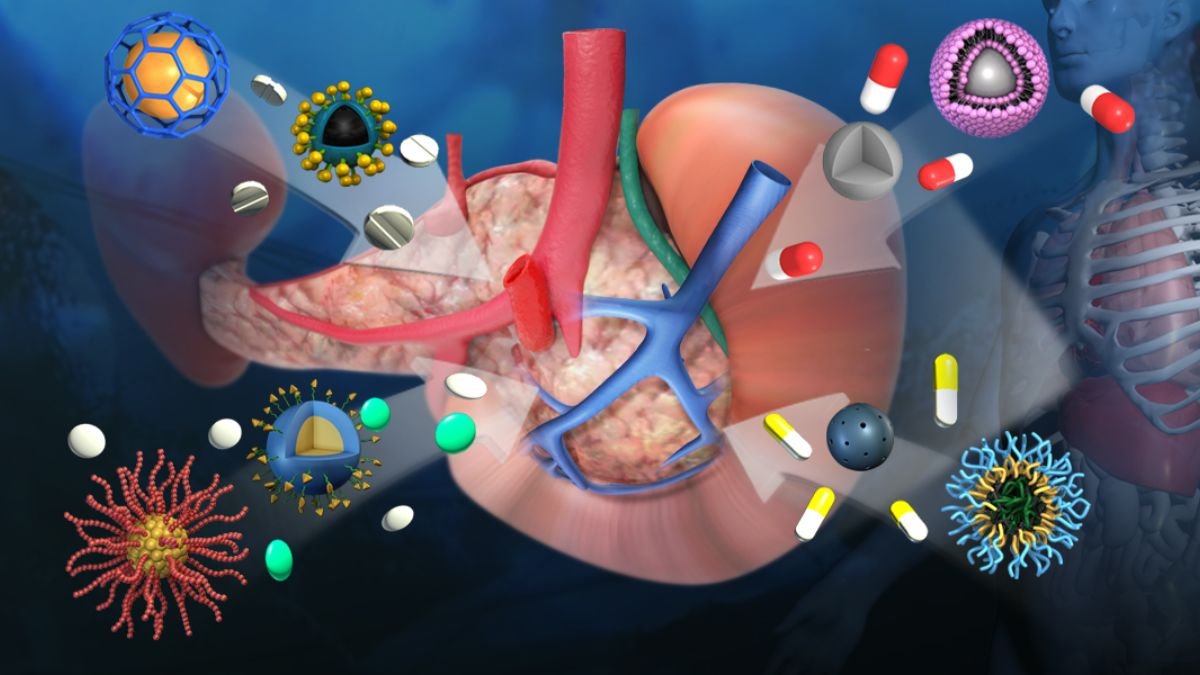Diabetes is one of the biggest lifestyle-related diseases in the world today. Millions of people rely on insulin injections, tablets, or other treatment methods every day to control their blood sugar levels. But have you ever wondered if you won’t need needles to take insulin in the future? Yes, nanomedicine is bringing about a major transformation in this direction – allowing insulin to be delivered to your body in a “smart” way, at the right time, and in the precise amount.
In this article, we will learn in detail how nanomedicine is revolutionizing the treatment of diabetes, how smart nano-insulin delivery systems work, and how this technology can change the lives of patients in the future.
What is Nanomedicine and How Does It Work?
Nanomedicine is a medical field of nanotechnology, in which drugs and treatment-related processes are designed at the nanometer (one billionth of a meter) level. Its main objective is to deliver drugs to the part of the body where they are truly needed, so that maximum benefit and minimum side effects can be achieved.
In the case of hormone-based drugs like insulin, this technology is proving to be extremely useful. Scientists are now creating nano-sized particles (nanoparticles) that protect insulin in the body and release it only when blood sugar levels rise.
Traditional Challenges of Diabetes and Insulin Delivery
Until now, insulin has been administered to diabetic patients through injections or pumps. But these methods have several problems:
- Frequent injections: Taking injections several times a day is painful and inconvenient.
- Risk of incorrect dosage: Sometimes too much or too little insulin is given, which can lead to hypo- or hyperglycemia.
- Timing issues: Patients have to remember to take insulin before or after meals, which is often forgotten. Long-term complications: Injection marks or skin problems can also occur.
The solution to all these problems lies in the smart nano-insulin system.
What is a Smart Insulin Delivery System?
A smart insulin delivery system is a modern method in which nanoparticles are designed to “sense” the body’s glucose levels. As soon as blood sugar rises, these nanoparticles begin to release insulin, and as soon as the sugar level normalizes, this process automatically stops.
This system works like a self-regulated mechanism inside the body—just like the pancreas of a healthy person.
How does the Nano-Insulin System work?
Scientists have divided this technology into three main parts:
- Nano-sensing particles: These detect blood sugar levels.
- Nano-capsules: These contain the insulin.
- Responsive mechanism: When blood sugar rises, these capsules open and release insulin.
For example, pH-sensitive nanoparticles are designed to change chemically according to blood sugar levels. Similarly, some nanoparticles are designed to detect glucose levels with the help of the glucose oxidase enzyme.
Types of Smart Insulin Systems
- Glucose-sensitive Nanogels: This gel releases insulin by sensing the amount of glucose present in the blood.
- Nano-vesicles: Tiny bubble-like structures that protect the insulin and open only when needed.
- Nano-polymer systems: These help increase the stability of insulin as well as release it slowly into the body. Scientific Progress and Recent Discoveries
- In recent years, several research institutions and universities have made significant progress in nanomedicine-based insulin technology.
- Scientists at MIT (Massachusetts Institute of Technology) have developed a smart glucose-responsive nanoparticle that can deliver controlled insulin release for up to 24 hours.
- The University of North Carolina has created a “patch” containing micro-nanoneedles that deliver insulin in a controlled manner through the skin.
- Researchers in China and Japan have developed biocompatible nanomaterials that can remain safely in the body for extended periods.
Future Direction: Comprehensive Diabetes Management with Nanomedicine
In the future, this technology will not be limited to insulin delivery alone, but could extend to continuous blood sugar monitoring, cell regeneration, and even repairing pancreatic damage.
Concepts such as smart nanochips and AI-integrated insulin systems may soon become a reality, autonomously determining dosages by understanding glucose patterns within the body.
Benefits of Nanomedicine
- Needle-free insulin therapy
- Precise and timely delivery
- Reduced side effects
- Improved quality of life for patients
- Reduced reliance on hospitals
Challenges and Limitations
Although nanomedicine is an emerging field, there are some obstacles to its widespread adoption:
- High production costs
- Limited studies on long-term safety
- Time required for government approval and clinical trials
- Accessibility of the technology for average patients
However, experts believe that as the technology becomes more affordable and safer in the coming years, it will become the future of diabetes management.
Conclusion
For patients suffering from diabetes, a nanomedicine-based smart insulin system offers a new ray of hope. Insulin is now becoming more than just a medication; it’s evolving into an “intelligent therapeutic solution”—one that can understand the body’s needs and make decisions accordingly.
This will not only make patients’ lives easier but also help maintain their health in the long term. In the future, this technology could bring us closer to the day when diabetes is no longer just a “manageable condition,” but a “curable disorder.”
